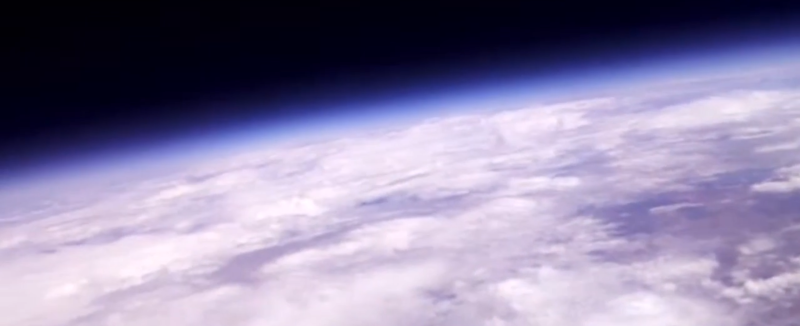The Project Horus team routinely launches high-altitude balloons in Australia. However, despite their desire for it, they haven’t beamed back live video. Until now. Horus 55 beamed video back to the ground from over 100,000 feet using a Raspberry Pi and some software-defined radio gear. Be sure and check out their video, below.
You might think this is easy, but there are many technical hurdles. First, the transmitter needs some power, but the thin atmosphere creates problems with cooling. In addition a really good receiving station is required, and the project wanted to stream that video to the Internet, which they were able to do.
The balloon carried a Raspberry Pi Zero W to capture and compress video. A LimeSDR Mini provided the DVB-S transmission on 70cm along with a power amplifier to get to about 800mW. Power dissipation in the payload was about 6 watts and required a special heat sink system to operate. The payload was powered by eight lithium AA primary cells, which perform well at low temperatures.
As you’ll see in the video, the balloon eventually burst, so if you were imagining yourself onboard, that’s a little disconcerting. There’s also a second video discussing the preparation for the flight that’s worth checking out.
Balloons have a long history, though we don’t think any World War II-era balloons sent back video. We remember another balloon that had a Raspberry Pi onboard that didn’t work out so well.
















Great work! Lots of logistics and planning (7 P’s avoided) and some success, and even recovery of the payload. Congrats.
It was 32.4 km.
I noticed that many popular youtubers from USA started to add subtitles with metric when they use freedom units to describe something, because they realized that a lot of their viewers are outside US. It’s a nice sign of respect.
Al, what percentage of HaD readers are from metric countries?
Last month, we got 44% of our traffic from the USA. Or 54% outside, if you want to think of it that way. (Half full? Half empty?)
But if you’re talking miles vs km, then you gotta note that the UK is our second biggest readership, so that’s some more on the “miles” pile.
And note that Al wrote the altitude in feet, but the length of an antenna in cm. On a PCB, I’ll do trace widths in thousands of an inch, and drill hole diameters in mm without a second thought.
A lot of us are ambi-units-dextrous. :)
Altitude is pretty much universally quoted in ft or in flight levels above Abt 15000ft FL150 etc.
I got the impression that the cm reference was to the communications wavelength — 70cm equates to about 430 MHz. Radio communications wavelength has been expressed in metric units in the US as long as I’ve been around.
Learn a thing or two about altitude, buddy, don’t be so smug.
I am an European, and ft for altitude is perfectly fine and understandable, I have better perception if we are talking about ft above sea level, rather than kilometers.
Might be fun to send up an amateur radio repeater on a balloon and see how far you can talk with people.
In most cases, it’s line-of-sight, meaning potentially hundreds of miles, and it’s been done. A quick search will result in lots of links to projects past and present.
I had a simplex (direct) conversation from the top of a 5700-foot peak to another person next to a pier on the ocean – a distance of over 25 miles – with a 1-Watt HT feeding a rubber duck antenna. The conversation was as clear as if we were standing next to each other.
Thanks for the numbers. No problem, HaD readers are a bit special, I’m used to translate miles, feet and inches on the fly, mph and knots also OK, on the other hand I’m struggling with a lot of others like ounces, pounds, bushels… Sometimes it’s quite funny for a simple metric person who can just multiply and divide by 10^n. I’ve recently heard somewhere on youtube something like “…and now we’ll move it by 17/32 of an inch” and I was like “are you f*ing kidding me?”
Anyway, it’s more about the feeling of some interaction with the readers, to break the impression that the author is just shooting the articles into empty inter-galactic space.
And “100000 feet” is of course way cooler than “30 km”. :)
Work with bit-level calculations enough, and the inch world’s use of binary fractions becomes a lot more intuitive. 17/32 is just 0.10001b, of course. If anything, I’m disappointed that it’s only used systematically for inches and not any of the other silly units
Feet for altitude is perfectly fine all around the world, people who understand basic flying terms are used to it. In fact 30km sounds strange in the aspect of measuring altitude.
I’m glad I still have some DVB-S gear. It never even occurred to me to try with Yagi-Uda… Of course because I was using it for TV with a dish. Glad this technology is not completely obsolete or useless.
Are those red sprites that keep flashing?